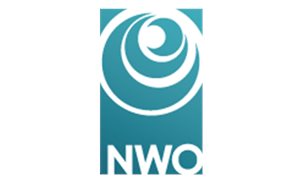25 October 2018
Jinlong Shao (left)
Fang Yang (right)
Various strategies have been explored to prevent pin tract infections (PTI), including the use of antibacterial sleeves. However, an ideal animal model to evaluate the efficacy of antibacterial strategies is still lacking. This study aimed to construct an animal model with a consistent induction of infection after bacterial challenge. Further, the efficacy of silver and chlorhexidine loaded chitosan sleeves was evaluated to prevent PTI around a percutaneous implant. Titanium pins wrapped with sleeves were implanted in anterior lateral rabbit tibia. After two weeks, Staphylococcus aureus suspensions (1 × 106 CFU) were injected weekly to the exit site, and the clinical infection status was recorded. After six weeks, all rabbits were euthanized to evaluate the bacterial colonization microbiologically and histomorphometrically. Results showed that the implant screw bilaterally penetrated the tibia and kept the implant stable. A rod length of twice the thickness of the soft-tissue layer was necessary to maintain the percutaneous penetration of the implants. A 100% infection rate was obtained by the bacterial inoculation. Silver loaded sleeves reduced significantly the bacterial density and reduced the inflammatory symptoms of the percutaneous pin tract. However, the addition of chlorhexidine to the sleeves had no added value in terms of further reduction of bacteria and inflammation. In conclusion, a consistent animal model was designed to evaluate strategies to prevent PTI. In addition, the use of silver loaded chitosan sleeves can be pursued for further (pre-)clinical exploration for the prevention of PTI.
 Recently, Jinlong Shao and Fang Yang, theme Reconstructive and regenerative medicine, and colleagues showed a percutaneous rabbit tibia model with repeated bacterial challenge to evaluate the efficacy of antibacterial strategies in Acta Biomaterialia.
Recently, Jinlong Shao and Fang Yang, theme Reconstructive and regenerative medicine, and colleagues showed a percutaneous rabbit tibia model with repeated bacterial challenge to evaluate the efficacy of antibacterial strategies in Acta Biomaterialia.
Jinlong Shao (left)
Fang Yang (right)
Various strategies have been explored to prevent pin tract infections (PTI), including the use of antibacterial sleeves. However, an ideal animal model to evaluate the efficacy of antibacterial strategies is still lacking. This study aimed to construct an animal model with a consistent induction of infection after bacterial challenge. Further, the efficacy of silver and chlorhexidine loaded chitosan sleeves was evaluated to prevent PTI around a percutaneous implant. Titanium pins wrapped with sleeves were implanted in anterior lateral rabbit tibia. After two weeks, Staphylococcus aureus suspensions (1 × 106 CFU) were injected weekly to the exit site, and the clinical infection status was recorded. After six weeks, all rabbits were euthanized to evaluate the bacterial colonization microbiologically and histomorphometrically. Results showed that the implant screw bilaterally penetrated the tibia and kept the implant stable. A rod length of twice the thickness of the soft-tissue layer was necessary to maintain the percutaneous penetration of the implants. A 100% infection rate was obtained by the bacterial inoculation. Silver loaded sleeves reduced significantly the bacterial density and reduced the inflammatory symptoms of the percutaneous pin tract. However, the addition of chlorhexidine to the sleeves had no added value in terms of further reduction of bacteria and inflammation. In conclusion, a consistent animal model was designed to evaluate strategies to prevent PTI. In addition, the use of silver loaded chitosan sleeves can be pursued for further (pre-)clinical exploration for the prevention of PTI.
-
Want to know more about these subjects? Click on the buttons below for more news.
Related news items

A tunable and injectable local drug delivery system for personalized periodontal application
11 May 2020 In Journal of Controlled Release, Fang Yang and colleagues, have designed and formulated a local delivery system by loading the PLGA-drug microspheres into PIC hydrogel. This system exhibited appropriate injectability, long-term structural stability, and no obvious in vivo inflammatory response. read more
Three Vici grants for Radboudumc researchers
20 February 2020 Christian Beckmann, Sander Leeuwenburgh and Annette Schenck each receive a 1.5 million euro Vici research grant from NWO. read more
NWO grant to develop new biomaterials for improved regeneration of bone defects
20 August 2019 Sander Leeuwenburgh, theme Reconstructive and regenerative medicine, and Roland Brock, theme Nanomedicine, were recently awarded with a grant of 581 k€ by NWO, domain Applied & Engineering Sciences, to develop new biomaterials for improved regeneration of bone defects. read more
H2020 Grant for Frank Walboomers and Ronald Bartels
23 May 2019 Frank Walboomers and Ronald Bartels, theme Reconstructive and regenerative medicine, have received a € 500,000 grant for research into graphene biomaterials from the Europan Union Horizon 2020 FET Open programme. read more
Sónia Schickert represents the Netherlands at the XVI Conference of the European Ceramic Society
9 May 2019 Sónia Schickert, theme Reconstructive and regenerative medicine, will represent the Netherlands at the XVI conference of the European Ceramic Society in Torino, Italy. read more
